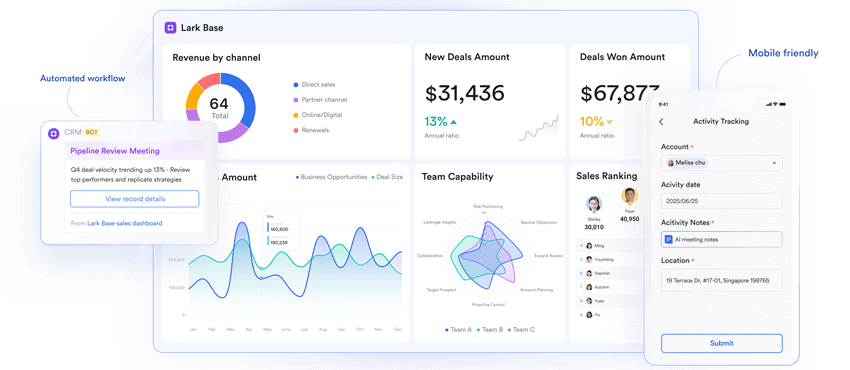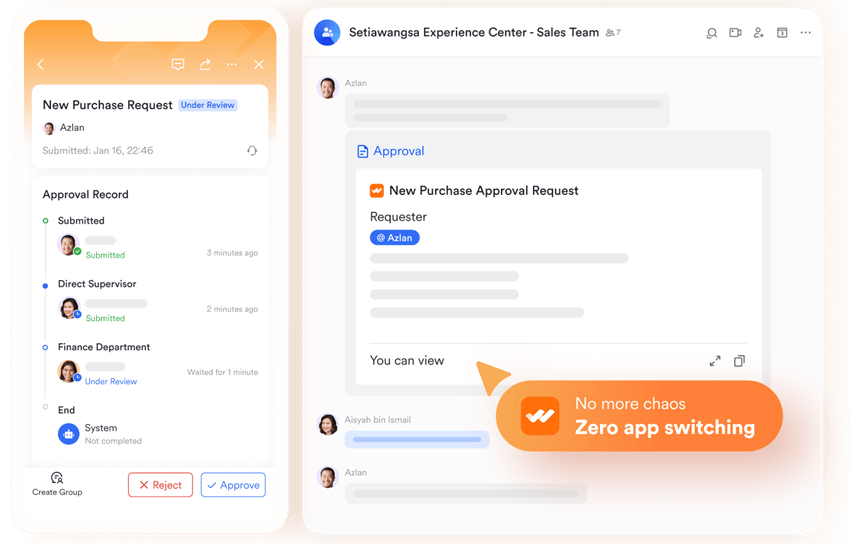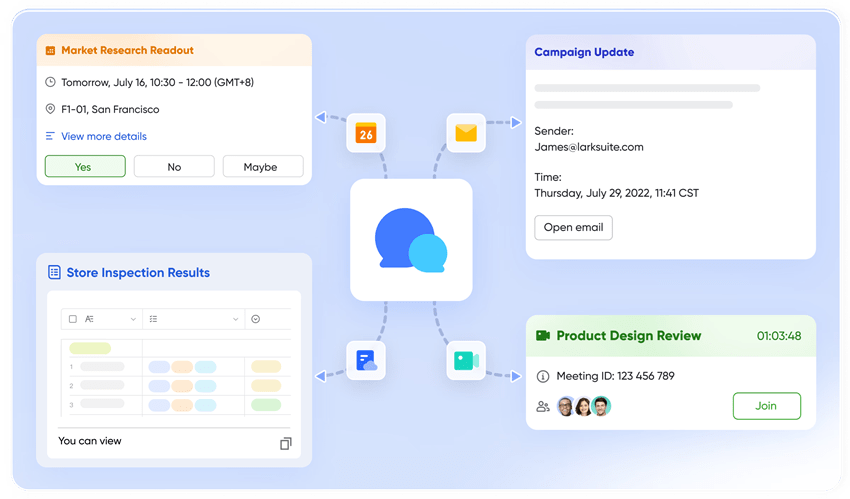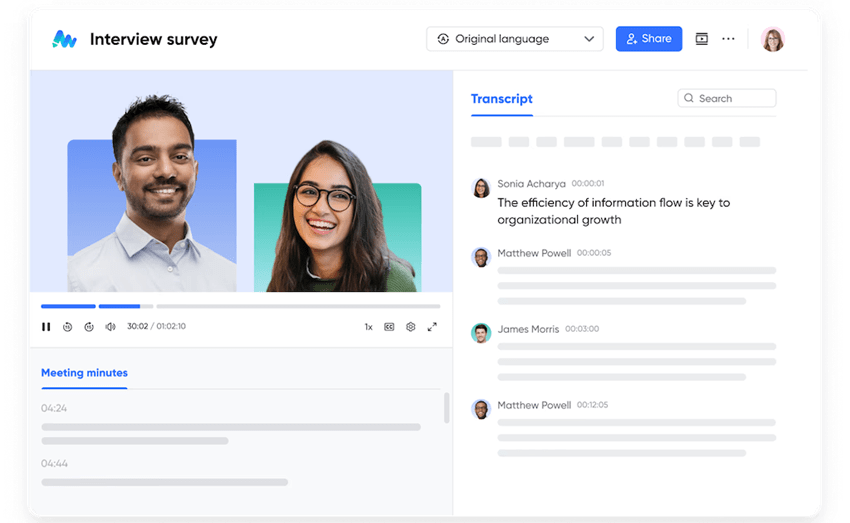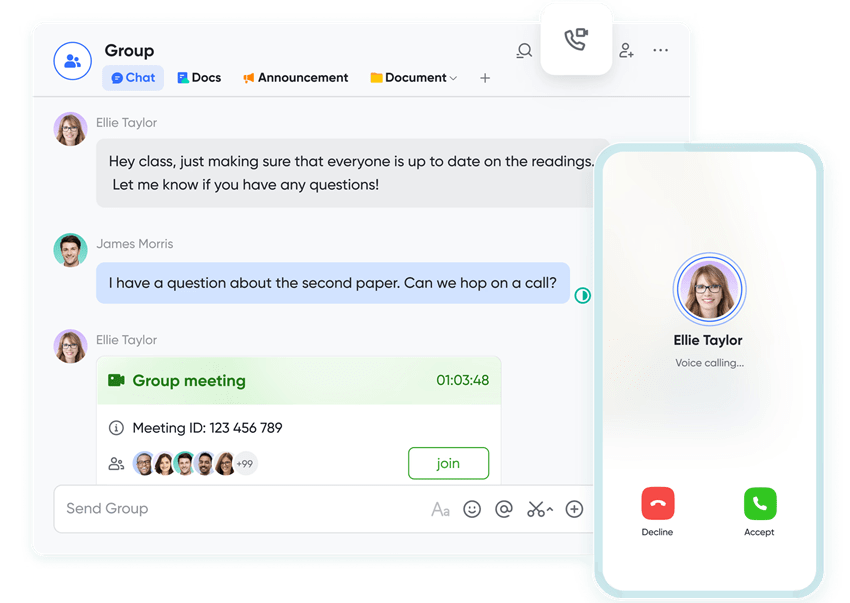Why Flexibility Beats Standardization in the Future of Workflows
For decades, organizations have been told that success comes from standardization. Repeatable processes, uniform tools, and rigid structures were seen as the safest way to scale. But in a world defined by rapid change, standardization often turns into a bottleneck. What today’s teams need is flexibility: systems that adapt to new conditions, workflows that shift with demand, and tools that evolve as organizations grow. Lark embodies this shift, enabling teams to build workflows that flex instead of break.
Flexibility doesn’t mean abandoning structure—it means creating systems that can handle exceptions, support diverse ways of working, and scale without friction. Winning teams aren’t the ones that follow rigid playbooks but the ones that can adjust quickly when markets shift or opportunities appear. By replacing standardization with adaptability, organizations unlock speed, resilience, and innovation.
Lark Base: building adaptable structures
Rigid systems can’t keep pace with shifting markets. A process that worked for a small local team often collapses when expanded globally or adjusted for a new business model. Lark Base provides the flexibility to build workflows that scale and evolve without forcing one-size-fits-all rules. Teams can choose grid, kanban, timeline, or gallery views depending on how they prefer to work. Advanced fields capture details unique to each project, while permissions ensure the right balance of access and security.
Automations reduce reliance on manual updates, turning changes in records into triggers for tasks or alerts. Instead of forcing standardization, Base empowers organizations to build processes that adapt. This is why many businesses consider Lark not just a CRM app, but also a comprehensive management platform: it brings together sales leads, customer management, personnel coordination, approvals, and projects in a way that fits their operations seamlessly.
Lark Approval: processes that flex with complexity
Approvals are often the point where rigid processes fail. Manual sign-offs or overly standardized routing create delays, especially when global teams are involved. Lark Approval gives organizations the flexibility to design processes that fit their needs, not the other way around. Customizable forms allow teams to capture region-specific or department-specific requirements. Routing rules automatically direct requests to the right reviewers, even when org structures shift.
Notifications keep stakeholders informed in real time, while completed approvals sync into Base for visibility. Rather than enforcing a rigid path, Approval enables workflows that adapt as complexity increases. This is exactly what modern business process management software is designed to achieve: scalable processes that move as quickly as the work itself.
Lark Messenger: conversations that adapt to context
Communication is where standardization breaks down most visibly. Emails and rigid reporting lines can’t keep pace with real-time collaboration, especially when decisions need to be made fast. Lark Messenger provides flexibility by adapting conversations to context. One-on-one chats allow for quick decisions, while Groups bring entire teams into the loop.
Threaded replies keep discussions organized, avoiding the chaos of scattered updates. Pinned messages highlight what matters most, and Buzz notifications escalate urgent issues across time zones. File sharing directly in chat ensures context is never lost. Unlike standardized communication systems that stifle speed, Messenger provides a fluid space where conversations move at the pace of execution.
Lark Minutes: records that flex to different needs
In standardized workflows, meetings often become black holes of information—conversations vanish once the call ends, and no one remembers exactly what was decided. Lark Minutes flips this dynamic by capturing discussions in ways that adapt to different team needs. Automatic transcription records every word, with speaker identification making accountability clear.
To-do extraction converts commitments into tasks, ensuring follow-through. Interactive transcripts let team members jump to the exact moment they need, while clip sharing makes it easy to circulate highlights. Instead of rigid note-taking processes that depend on one person, Minutes provides flexible, intelligent records that scale across teams and geographies.
Lark Meetings: collaboration that fits diverse workflows
Standardized meeting formats rarely work for diverse teams. Some groups need deep focus sessions, others need quick syncs, and global teams need inclusive participation across time zones. Lark Meetings adapts to these needs by making collaboration flexible. Magic Share allows teams to review live documents or dashboards together, keeping everyone aligned on the same version.
Breakout rooms support smaller, focused discussions inside larger meetings, while subtitles ensure inclusivity across languages. Cloud recordings provide accountability for those who couldn’t attend, and custom layouts allow meeting structures to fit cultural preferences. Instead of rigid meeting templates, Lark Meetings supports the flexibility required for real collaboration.
Conclusion
The future of workflows isn’t about enforcing standardization—it’s about enabling adaptability. Teams that thrive are those that can adjust processes on the fly, respond to changing demands, and keep moving without being slowed by rigid structures. Lark makes this possible. Base builds adaptable structures, Approval creates flexible processes, Messenger keeps conversations dynamic, Minutes provides records that adjust to needs, and Meetings make collaboration inclusive.
For organizations preparing for the future, the message is clear: flexibility drives execution, while standardization often stalls it. That’s why Lark stands among the best project management tools: because it enables workflows that evolve as fast as the business around them.


